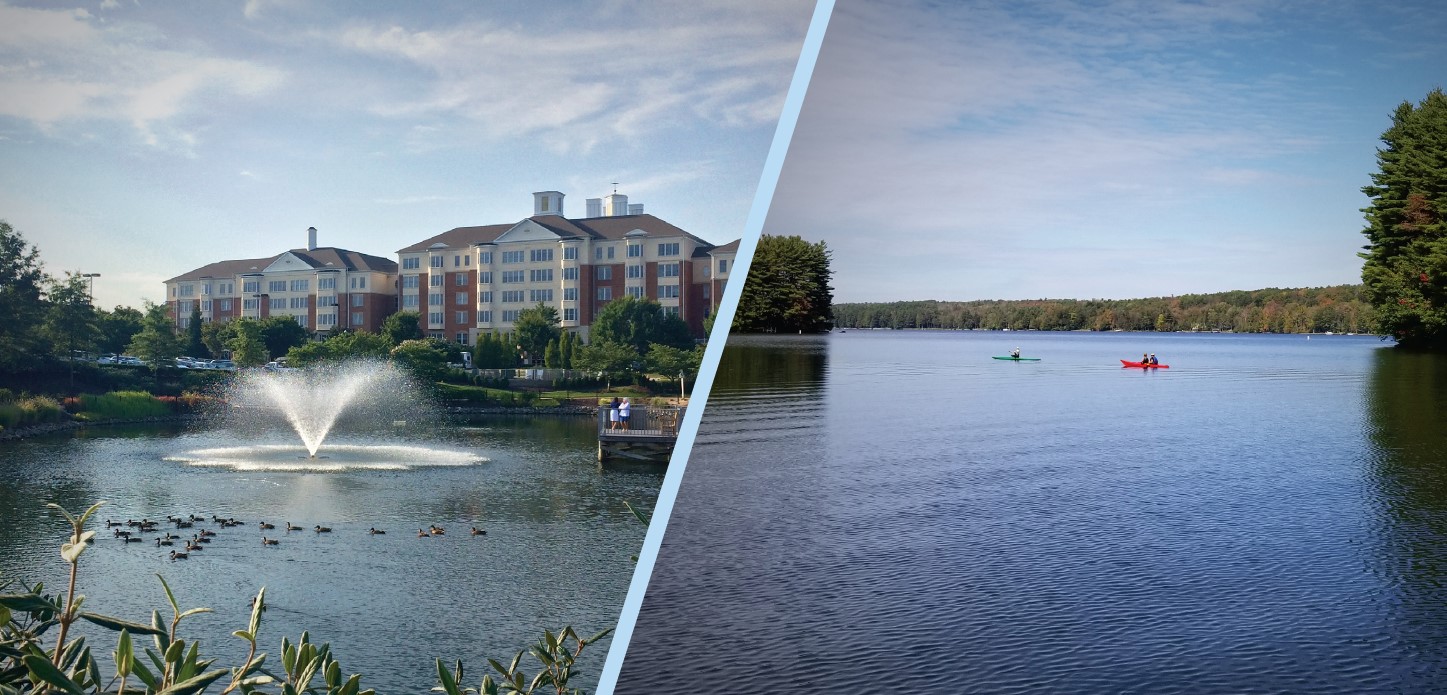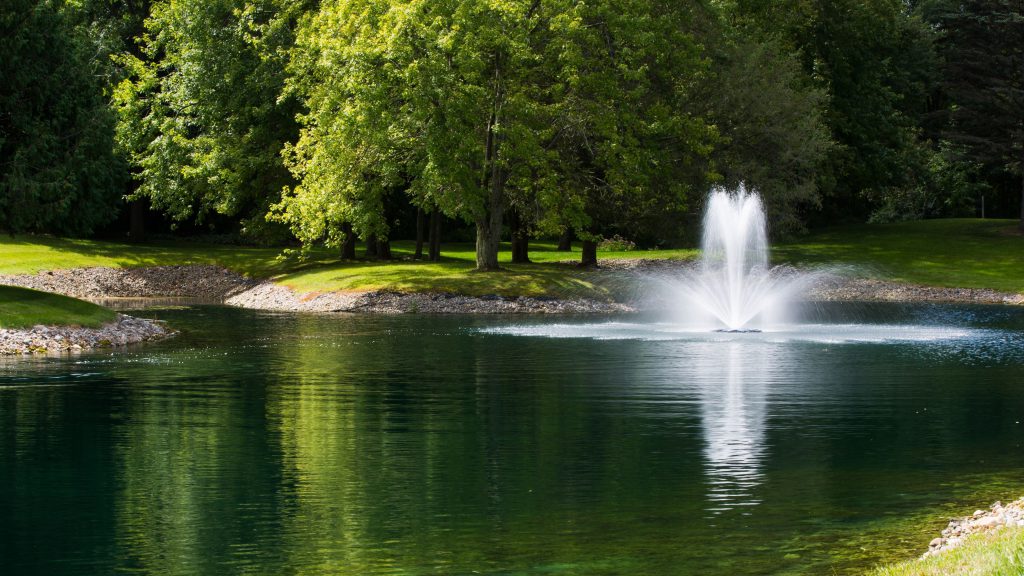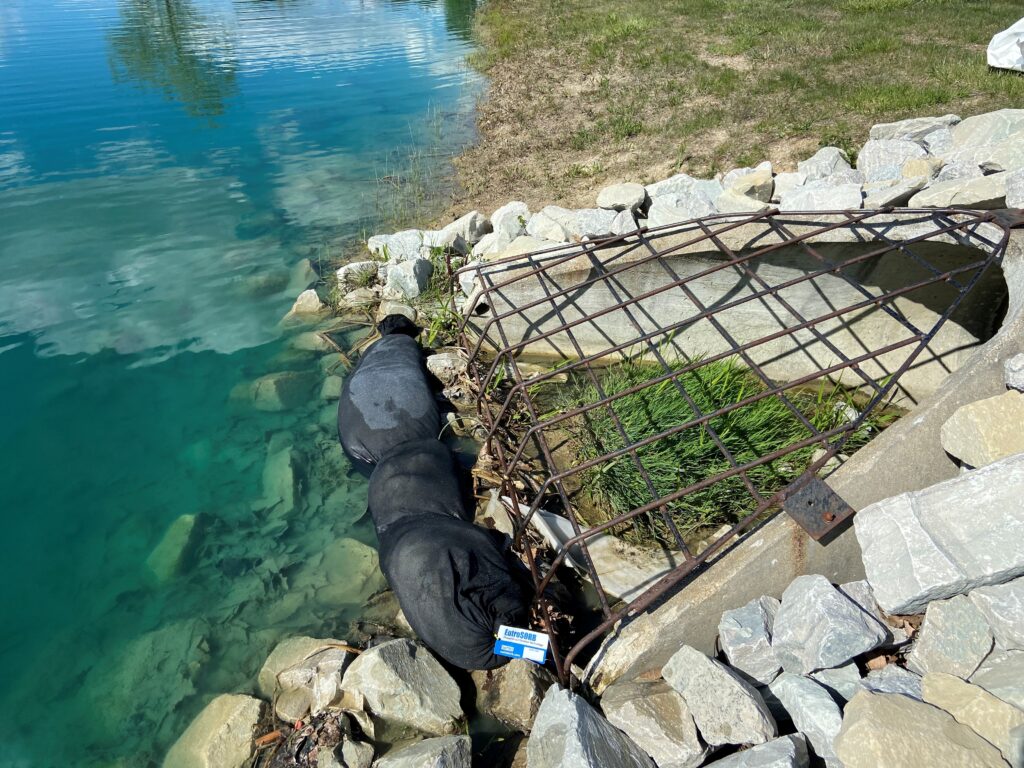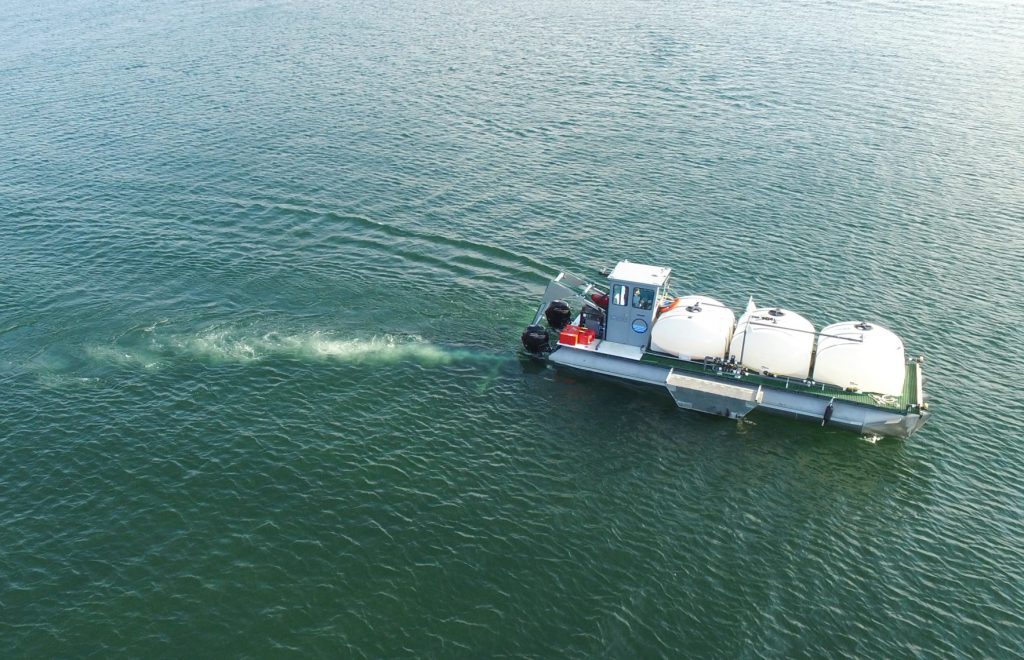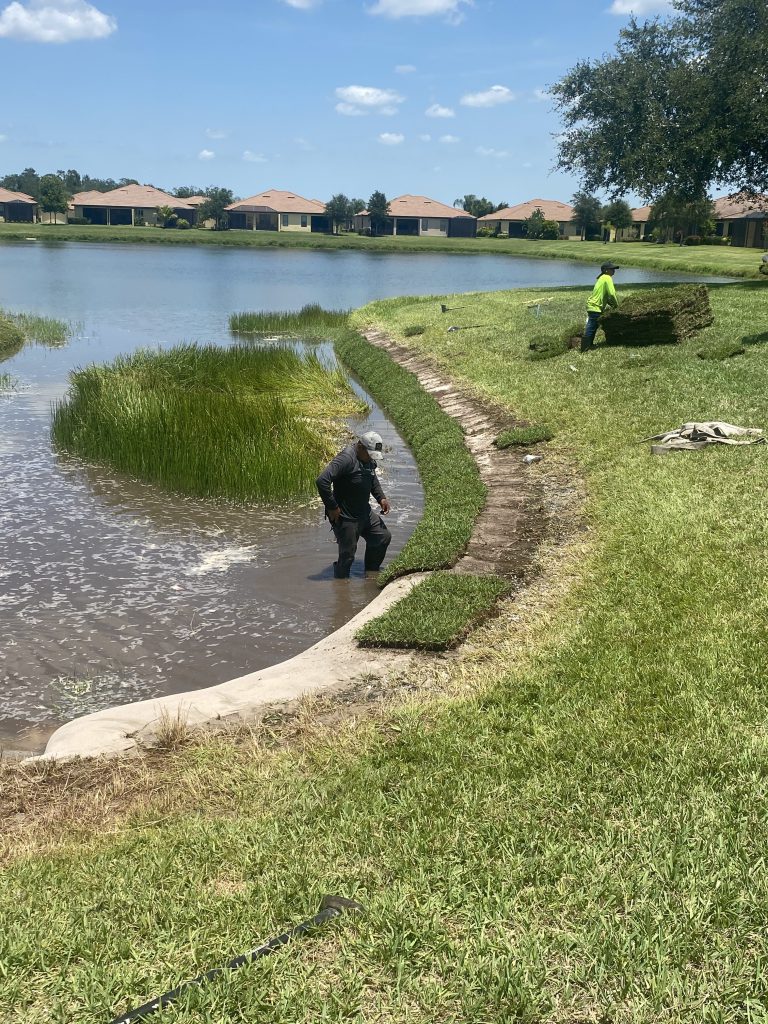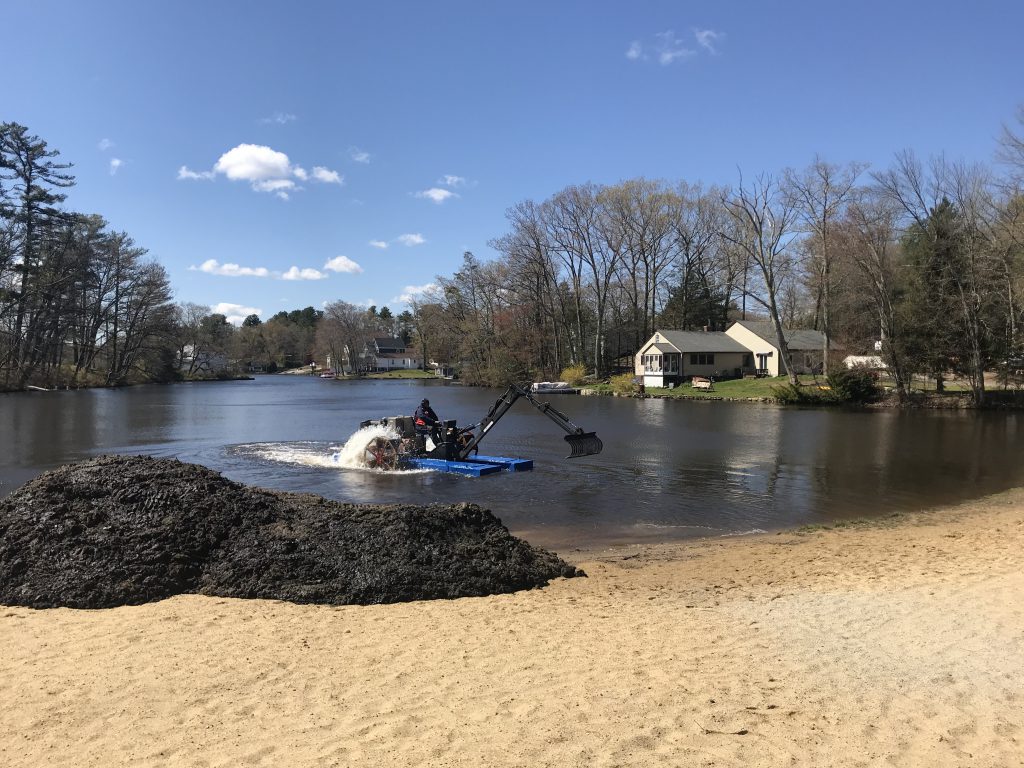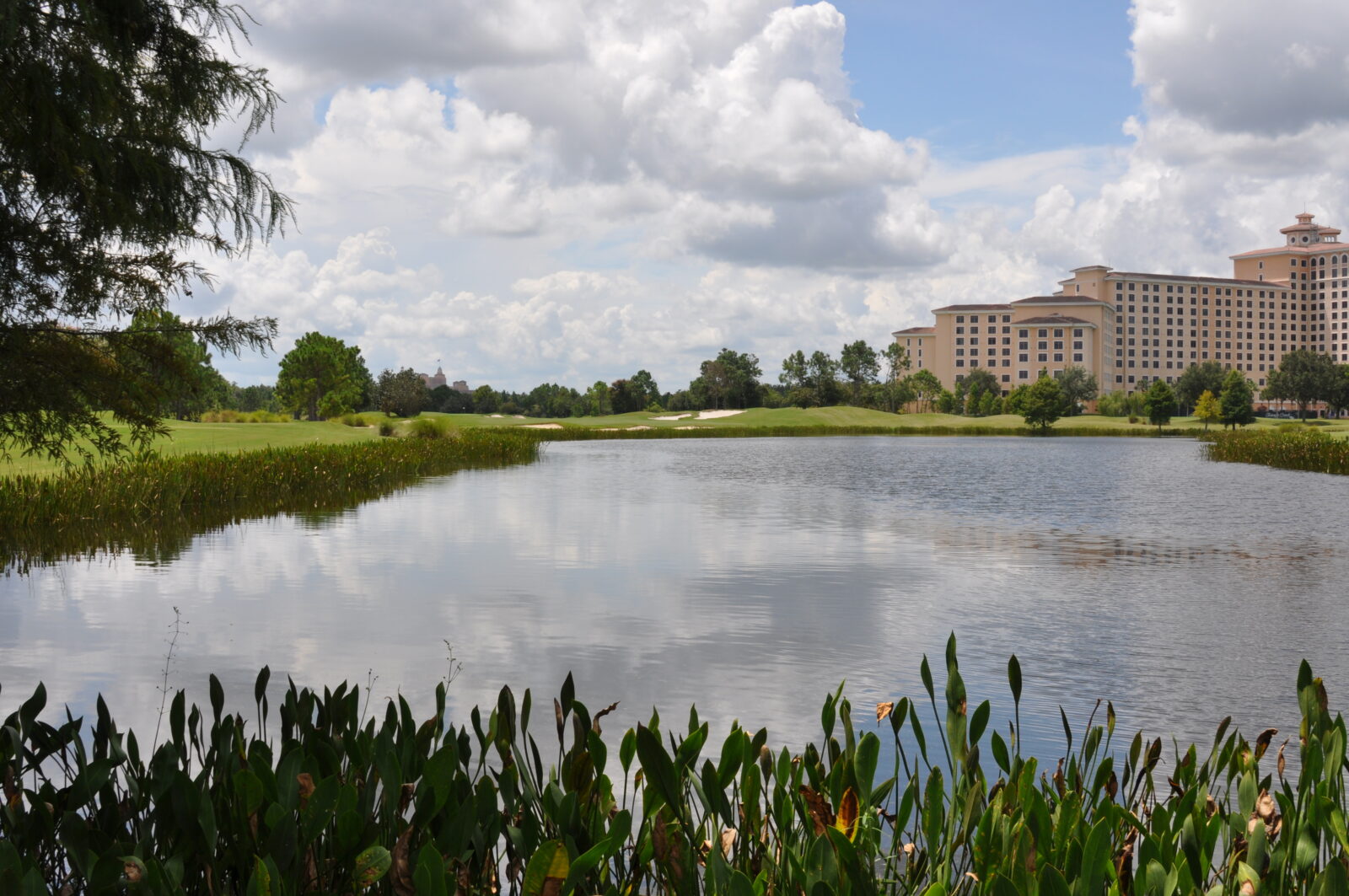
Are Large Lakes and Small Ponds Managed Differently?
When it comes to managing lakes and ponds, there is no one-size-fits-all approach. Each waterbody is different, with its own set of challenges and needs. Just as no two waterbodies are alike, no two management programs should be exactly the same.
Lakes and ponds are commonly confused due to their varying sizes, depths, and uses. There is no official distinction and naming conventions are often used interchangeably from region to region.
At SOLitude, we use the term “pond” to refer to smaller, shallower waterbodies designed to retain water during rainstorms. We use “lake” to describe larger deeper waterbodies. While both types experience water quality issues, management needs can vary significantly between lakes and ponds.
What needs to be considered when building a management plan?
SOLitude understands the importance of tailoring maintenance programs to suit the specific characteristics of a waterbody, whether it’s a stormwater pond in a neighborhood, a large lake in a public park, or a reservoir for drinking water. The size and depth of the waterbody should be considered when developing a management plan.
Fountains vs. Surface Aerators vs. Submersed Aerators
Stormwater ponds require consistent maintenance and monitoring to ensure they function as intended. Solutions such as floating fountains and surface aerators can help correct dissolved oxygen deficiencies by creating turbulence that promotes oxygen transfer at the surface. Because of this, they are only recommended for shallower ponds less than six feet deep. Deeper, larger lakes can benefit from submersed aerators, which pump air to the bottom through tubing. As air bubbles rise, they circulate and oxygenate the water column.
Nutrient Management Solutions for Small Ponds
Elevated nutrient levels in stormwater ponds may require nutrient remediation services using products like Phoslock (1) and EutroSORB (2), which physically bind with and remove excess nutrients to help prevent the likelihood of weeds and algae. Phosflow and EutroSORB F, which are absorbent media contained in small permeable bags, are most effective at capturing nutrients when placed around pond inlets and outlets.
Nutrient Management Solutions for Large Lakes
Aluminum sulfate (alum) is another nutrient remediation product recommended for lakes, usually larger than 10 acres. Using specialized barges, alum can be applied rapidly and uniformly across vast areas to bind with nutrients. Then, the nutrients sink with the alum floc and become trapped and inactivated in the bottom sediments, helping to improve water clarity and limit future water quality issues.
Shoreline Management & Erosion Repair Strategies
Shoreline management plays a crucial role in nutrient control. Planting vegetative buffers around stormwater ponds can help limit nutrient pollution and slow the flow of water during storms. While maintaining a buffer around a larger lake may not be realistic, vegetation can be planted around recreational areas or specific spots with heavy nutrient loading.
If shorelines are severely eroded, restoration may be necessary using bioengineering techniques to create “living shorelines”. These efforts are generally easier and more cost-effective around smaller ponds, but large lakes can be repaired in phases or only in high-traffic areas.
Sediment & Much Removal Options for Waterbodies
All waterbodies naturally lose depth over time, which means they all require a form of depth restoration to maintain functionality. Dredging services can restore a stormwater pond’s water-holding capacity and increase the depth of lake coves and recreational areas.
Hydro-raking is a cost-friendly alternative for spot removal of muck build-up, prolonging the need for dredging. Bathymetric mapping services help assess sediment build-up and predict future dredging needs.
Implement the Right Solutions for Your Unique Waterbody
Regardless of size, proper planning and budgeting are essential for the consistent management of waterbodies. Understanding the differences between small stormwater ponds and large lakes, and implementing appropriate management practices will ensure they meet the needs of those who rely on them.
1. Manufactured by PET Water Solutions
2. Manufactured by SePRO
SOLitude Lake Management is a nationwide environmental firm committed to providing sustainable solutions that improve water quality, enhance beauty and preserve natural resources.
SOLitude’s team of aquatic scientists specializes in the development and execution of customized lake, stormwater pond, wetland and fisheries management programs. Services include water quality testing and restoration, algae and aquatic weed control, installation and maintenance of fountains and aeration systems, shoreline erosion control, muck and sediment removal and invasive species management. SOLitude partners with homeowners associations, golf courses, private landowners, businesses and municipalities. SOLitude Lake Management is part of Rentokil, a leading business services company, operating across the United States, Canada and Puerto Rico.
For more information, visit SOLitude Lake Management at solitudelakemanagement.com, and connect on Facebook, LinkedIn and Twitter.








